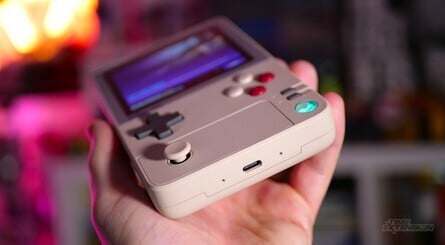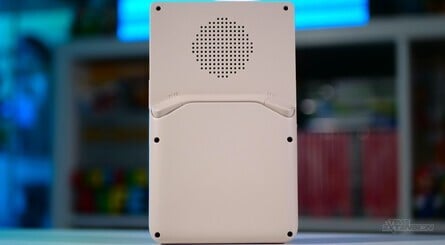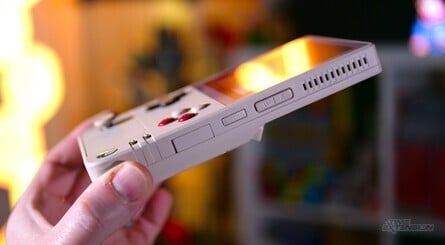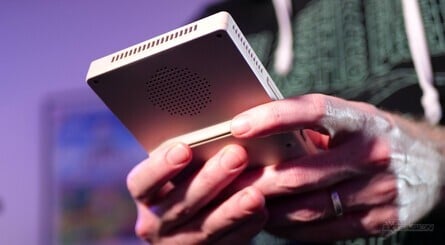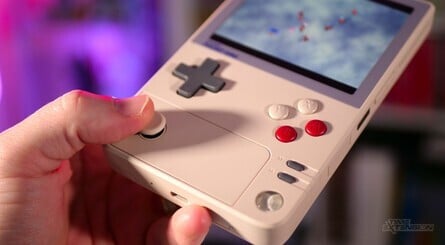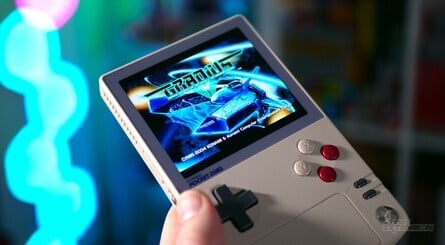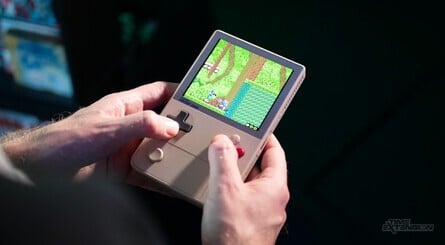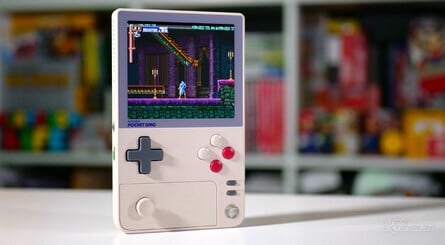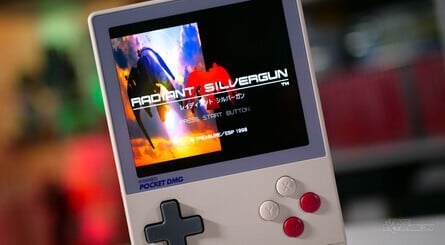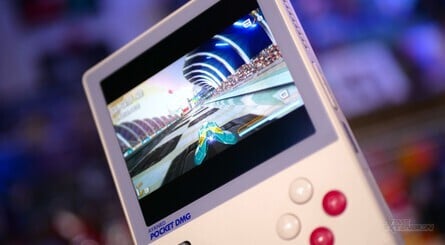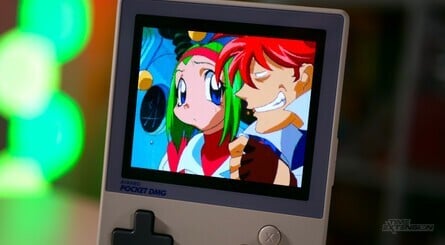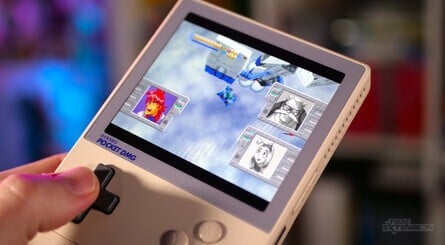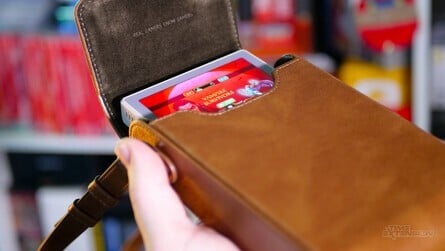General Information
The AYANEO Pocket DMG is shamelessly inspired by the Nintendo Game Boy, right down to using the same colourway (on the model I reviewed, at least) and even having a boot screen which mimics the pea-soup LCD display of the original 1989 DMG-01.
However, beating within the heart of this portable powerhouse is a cutting-edge Snapdragon G3x Gen2 chipset, and the screen is a pin-sharp 1240 x 1080 pixel OLED panel. With Android 13 on board, this device has the power to not only play the latest games on the Google Play store but also handle emulation all the way up to consoles such as the PSP, PS2 and GameCube.
Pricing starts at $339 via an ongoing IndieGoGo crowdfunding campaign (the RRP is $449), with the top-spec model of the device costing $589 ($699 after the funding drive ends).
AYANEO Pocket DMG Review: Design

The AYANEO Pocket DMG cribs from one of the most iconic pieces of consumer tech from the last few decades, Nintendo's famous Game Boy DMG-01. While it's available in other colours, AYANEO sent me the retro-flavoured edition, which has the same beige casing and maroon buttons. The design and button layout is similar, too; you've got the D-pad on the left, beneath the square screen.
However, there are some key differences to note, the most obvious being the addition of two extra face buttons, a Hall Effect analogue stick and a trackpad. The 'Start' and 'Select' buttons have been moved to accommodate the latter, and there's an AYANEO menu button located in the bottom-right corner.
On the left-hand side of the device, you'll find the 'MagicSwitch' volume dial, 'LC' button, Menu button and a 'Turbo' toggle switch, the latter of which allows you to jump between the system's performance modes: Saving, Balanced and Max.
On the right-hand side, there's the 'RC' button (which takes you back a step), another customizable key (which by default drops you back to the home screen), the power button/fingerprint scanner and MicroSD card slot.
AYANEO has taken a leaf out of Analogue's book by copying the stereo speaker positioning of its Analogue Pocket handheld; rather than having the speakers on the front of the device, they are instead situated on the sides, flanking the screen. The speakers are clear and surprisingly powerful, offering a decent level of bass.
Flip the AYANEO Pocket DMG over, and you'll spot four in-line shoulder 'bumper' buttons situated roughly halfway down the unit's back. Interestingly, the device comes with an optional set of metallic shoulder triggers, which you can swap out if you wish. The rear of the unit also has a large fan for cooling, which is connected to another vent on the top edge.
On the bottom edge you'll find the USB-C port, but the top edge has no inputs or buttons. There's also no 3.5mm headphone jack, so you'll have to connect headphones either via the USB-C port or wirelessly via Bluetooth.
AYANEO Pocket DMG Review: Display
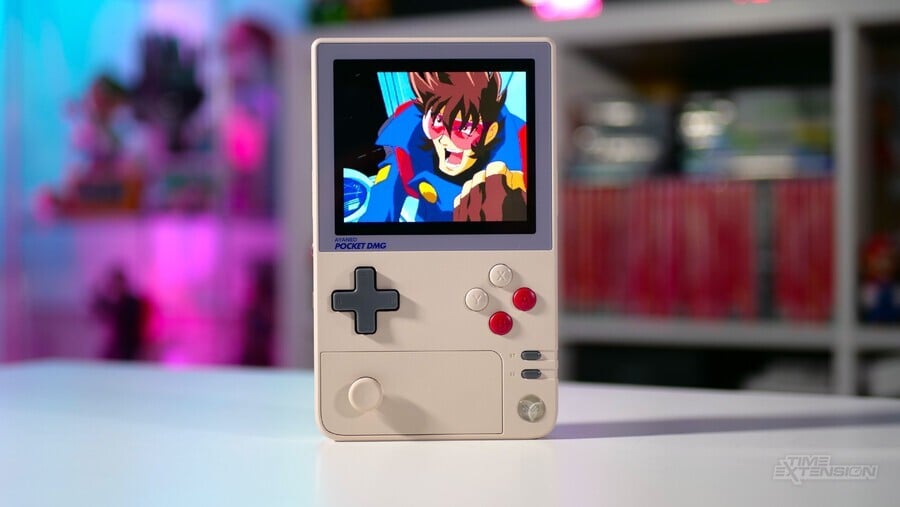
Like the original Game Boy, the AYANEO Pocket DMG has a square screen – well, almost square, as its resolution is 1240 x 1080 pixels, which means it has an aspect ratio of 8:7.
We've got an OLED panel here, and it's seriously impressive. Brightness is fantastic, and colours really pop – but it's the sharpness that really blew me away. Cramming all of those pixels into a relatively compact 3.92-inch space means you've got a fantastic degree of pixel density.
When running games with lovely chunky pixels, this display really excels. Game Boy games, in particular, look absolutely fantastic – even more so when you apply a pixel grid filter, which is possible in emulation front-ends like RetroArch. This is one of the best screens we've yet seen on this kind of device.
This is also a touchscreen because we're running Android. It's somewhat easier to interact with than the display on the Pocket Micro and Pocket S because it feels more like a smartphone; the virtual keyboard doesn't obscure as much of the display. However, it does pick up fingerprints quite quickly, so be sure to keep a cloth handy.
AYANEO Pocket DMG Review: Controls
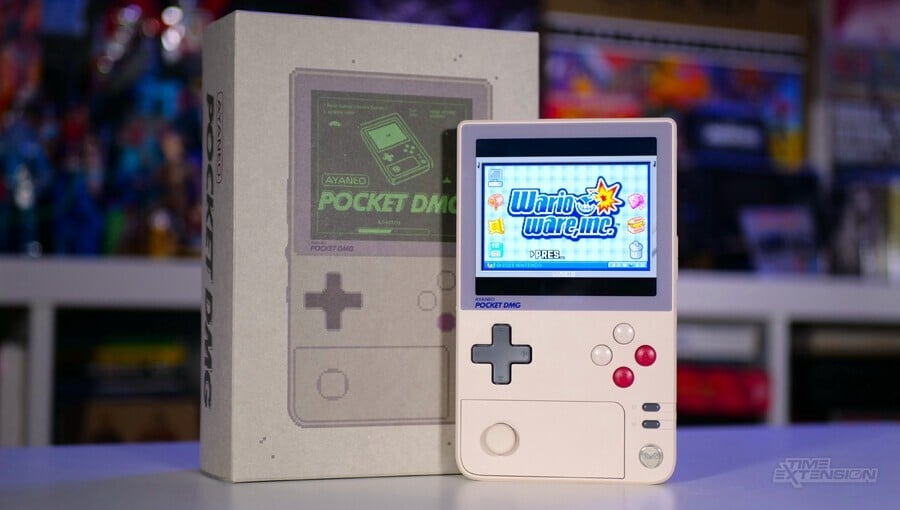
The AYANEO Pocket DMG's D-pad placement is going to make a lot of retro gamers very happy – unlike the Pocket S, which placed the digital pad below the left analogue stick where it was awkward to use, the pad here is your main point of control, which is good news if you're looking to play games made before analogue input became the norm.
The D-pad itself is great, too; it's fairly large and has a good central pivot point, which means you get precise control without any false dialogical inputs. On the downside, it's quite shallow and doesn't have a lot of travel; I would have preferred it to be a little more raised up from the device's body.
As for the Hall Effect analogue stick, it's a slightly less positive experience, but still good. It's quite small, and is located in the bottom left-hand corner of the device, which means you have to shift your grip in order to use it. This means that when you're also trying to reach the L1 and L2 buttons, you're really stretching your fingers. It's possible to get used to it after a while, but it feels rather odd initially.
You'll notice that there's no second analogue stick on the AYANEO Pocket DMG; instead, the trackpad takes this role. It's surprisingly decent, despite my initial misgivings, and even has a 'press' function, which acts as your R3 input. If you're playing a game where the right-hand stick controls your camera, then it works fine, but for titles where this stick is used for more precise inputs – such as aiming a gun, for example – it's less ideal. Would two sticks have been better? Quite possibly, but there are times when the trackpad can be used as a mouse pointer, which is handy in some situations, such as when you're playing point-and-click adventures via ScummVM.
The face buttons, like the D-pad, are quite shallow, and they have a rounded surface. They're not too clicky and feel responsive enough. The shoulder bumpers are well positioned, resting directly underneath your index fingers when you grip the unit. Shifting your fingertips between L1 / R1 and L2 / R2 doesn't feel very intuitive, though, but in-line buttons would have been AYANEO's only real option here; 'stacked' buttons wouldn't fit with the design.
AYANEO Pocket DMG Review: Software & Emulation
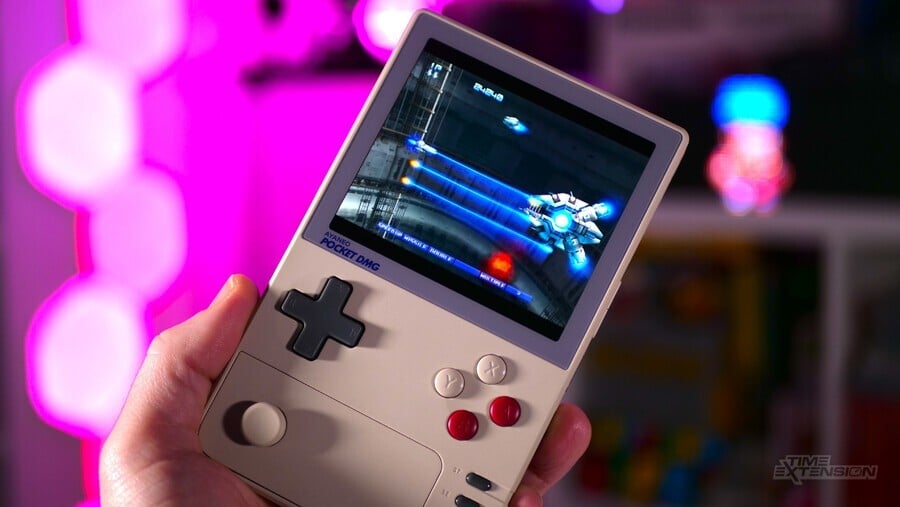
While many of AYANEO's other gaming handhelds use Windows as their OS, the Pocket range is rocking Android, Google's mobile software. This means the Pocket DMG benefits from amazing app and game support and is packed with the kind of features you only get from a mature and evolved operating system.
AYANEO has introduced its own apps into the mix with AYASpace and AYAHome. You can toggle settings by tapping the AYANEO button, which summons a pop-out menu that allows you to toggle performance modes, tinker with the controls and even change the colour of the RGB light inside the AYANEO button.
With the Snapdragon G3x Gen2 calling the shots, even the most demanding Android game runs smoothly on the AYANEO Pocket DMG. The 8:7 aspect ratio sometimes causes issues, but lots of games simply run with borders at the top and bottom of the display area, so it's not a deal-breaker. Others, like Vampire Survivors, fill the entire screen, which actually makes them more agreeable than when played on an Android smartphone.
Emulation is likely to be the main point of focus for those who are interested in picking up an AYANEO Pocket DMG, however. Android is blessed with a wealth of very advanced and capable emulators, and this device can comfortably cope with GameCube and PS2 games – although you may need to tweak some settings to get optimal performance.
Speaking of performance, you'll find that most games run just fine in the default 'Balanced' mode, but it's also possible to drop it down to 'Saving' for many older games, such as NES, SNES and Mega Drive titles. This has a massively beneficial impact on the Pocket DMG's stamina.
One of my biggest issues with Android and Windows-based gaming handhelds is the fact that the interface isn't based solely around button inputs – Android expects you to use your fingers, while Windows relies on mouse control. AYANEO is aware of this, as the included AYASpace app allows you to pull together all of your retro games in one place without having to constantly navigate through menus using your fingers.
It's a smart little app, but I prefer using something like the ES-DE frontend, which does a better job and allows you to import your setup from another system. You can also download other UI layouts for it, including one which mimics the look of Nintendo Switch Online, right down to the system icons.
AYANEO Pocket DMG Review: Battery Life & Storage
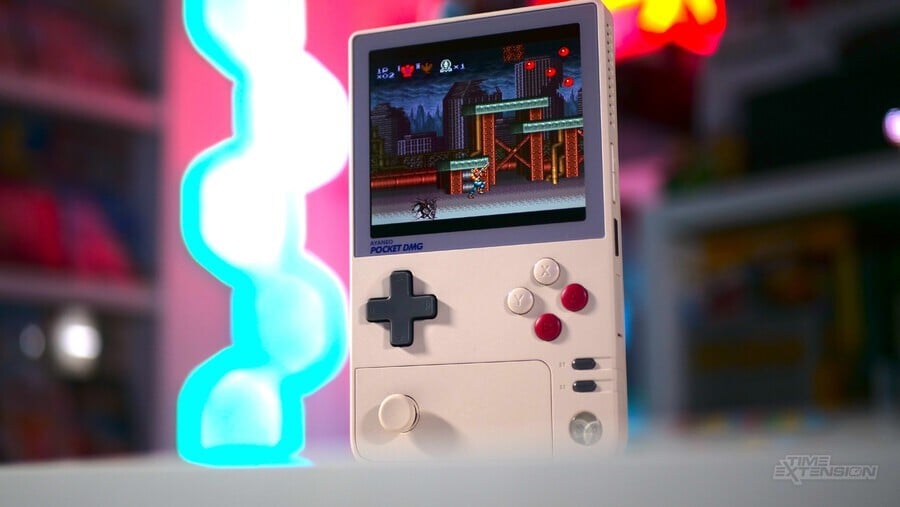
The AYANEO Pocket DMG has a 6000mAh battery that can be topped up quickly via fast-charging protocols. You'll need to source your own charger, though; it doesn't come with one. AYANEO is selling a separate 35W 'Retro Adapter' if you're one of the few people who doesn't have stacks of these things lying around the house.
As you might imagine, the stamina of the Pocket DMG's battery can fluctuate wildly depending on what tasks it's performing. Dial it up to 'Max' performance mode for high-level emulation, and you'll be looking at a couple of hours of use before it needs charging again. However, when placed into 'Saving' mode, it's possible to get almost 15 hours of play in some circumstances – although this does naturally mean you'll be limited to low-level emulation.
AYANEO offers this premium-style leather carry case to keep your Pocket DMG in pristine condition. The only downside is that the flap is only secured with magnets and can fall open if it's turned upside down with the device inside. Oops. — Images: Damien McFerran / Time Extension
When you consider that you also have a 'Balanced' mode in the middle, it becomes obvious that putting a definitive figure on the AYANEO Pocket DMG's typical battery life is impossible. However, for those who are only interested in low-level emulation, the stamina is impressive.
The unit I was sent to review has a whopping 1TB of internal storage, but the cheapest model has 128GB. 256GB and 512GB variants are also available, and the price naturally rises as you add more storage. There's also a MicroSD card slot.
AYANEO Pocket DMG Review: Specs
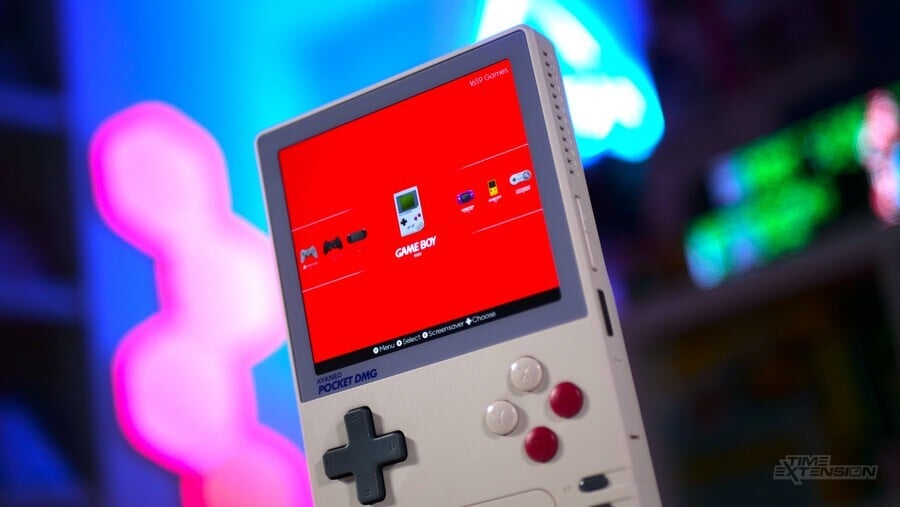
| Screen size | 3.92" OLED Screen 1240 x 1080 pixel |
| CPU | Snapdragon G3X Gen 2 / 8 Core Arm SOC Up To 3.36GHz |
| GPU | Adreno A32 GPU @ 1000MHz |
| Memory | LPDDR5X 8533Mbps |
| OS | Android 13 |
| Software | AYASpace front-end, AYAHome launcher |
| Storage / Pricing | 8G RAM + 128G Storage - $339 12G RAM + 256G Storage - $419 16GB RAM + 512GB Storage - $499 16GB RAM + 1TB Storage - $589 |
| Connectivity | WiFi 6 / BT 5.3 |
| Motion Control | Six-axis gyroscope |
| Vibration | X-axis linear motor |
| Heat Control | Active Air Cooling |
| Interface & Expansion | 1X USB Type-C | USB 2.0 OTG 1X Micro SD Card Slot | SD 3.0 |
| Biometrics | Power key integrated audio fingerprint recognition |
| Battery | 6000mAh / 25W PD QC |
| Size | 91.5 x 151 x 22.3mm |
| Weight | 279g |
| Available Colours | Moon White, Arctic Black, Retro Colour |
AYANEO Pocket DMG Review: Conclusion
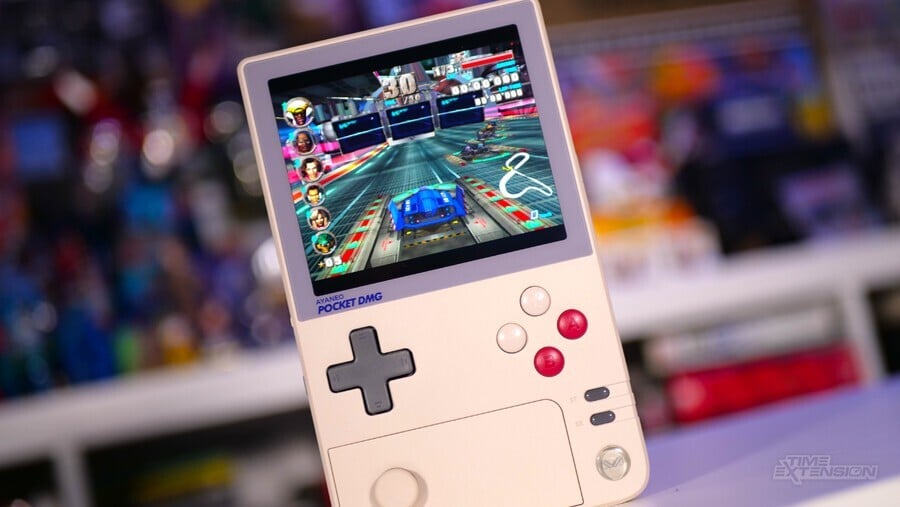
When it comes to emulation power and premium design, the AYANEO Pocket DMG is arguably the king of vertically orientated handhelds. While it uses software emulation rather than FPGA (as the Analogue Pocket does), it can play games from a much wider selection of systems, including the PS2 and GameCube.
Add in a fantastic screen and excellent retro-focused controls, and this has the potential to be one of the best platforms for old-school gaming money can buy – and it has the added benefit of being supported by thousands of Android games and applications, too.
The sticking point, of course, is the price. The entry-level model is $340 if you take advantage of AYANEO's early-bird pricing offer, but I didn't review that unit, so I can't comment on its capabilities when it comes to running high-level emulation.
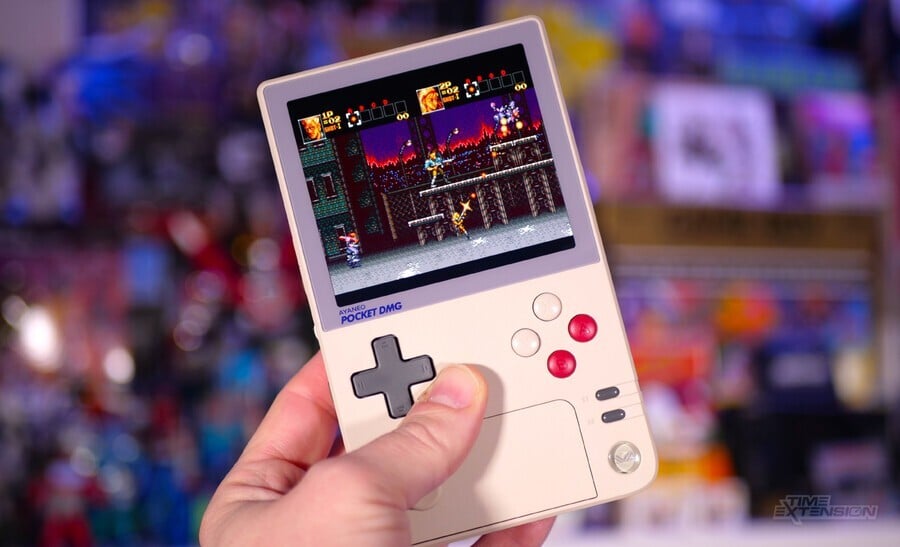
I was sent the top-of-the-line $589 version, which is an eye-watering amount of money, even for seasoned retro gaming enthusiasts (the actual price is $700 if you don't grab an early-bird unit).
Given the many options currently available on the market when it comes to emulation handhelds – some of which are (almost) providing the same level of power that we see here – it's tricky to recommend the Pocket DMG to everyone.
Those who only wish to play 8 or 16-bit games might be better off looking at cheaper alternatives, such as a device made by Anbernic or PowKiddy, but if you want the absolute best performance in the smallest, lightest vertical form factor, then the Pocket DMG is proof that you really do get what you pay for.


